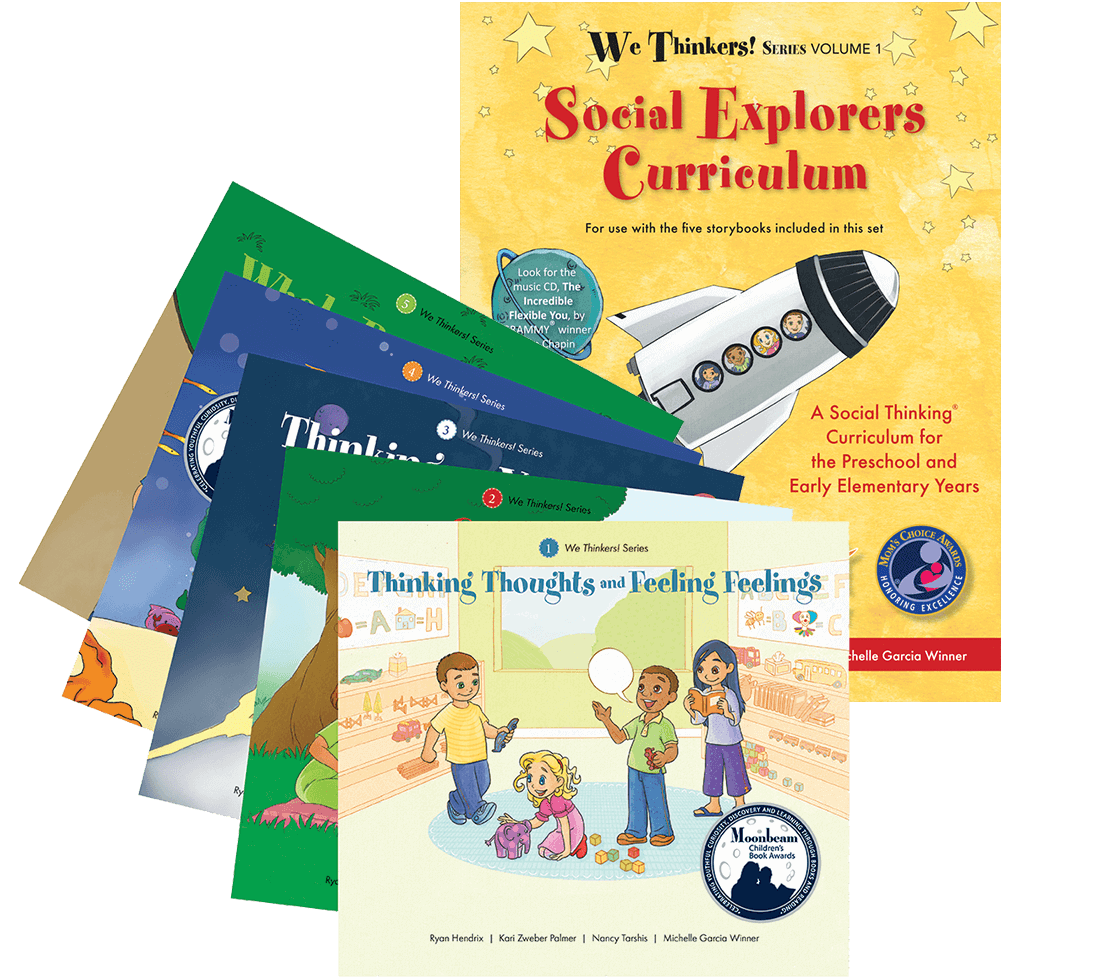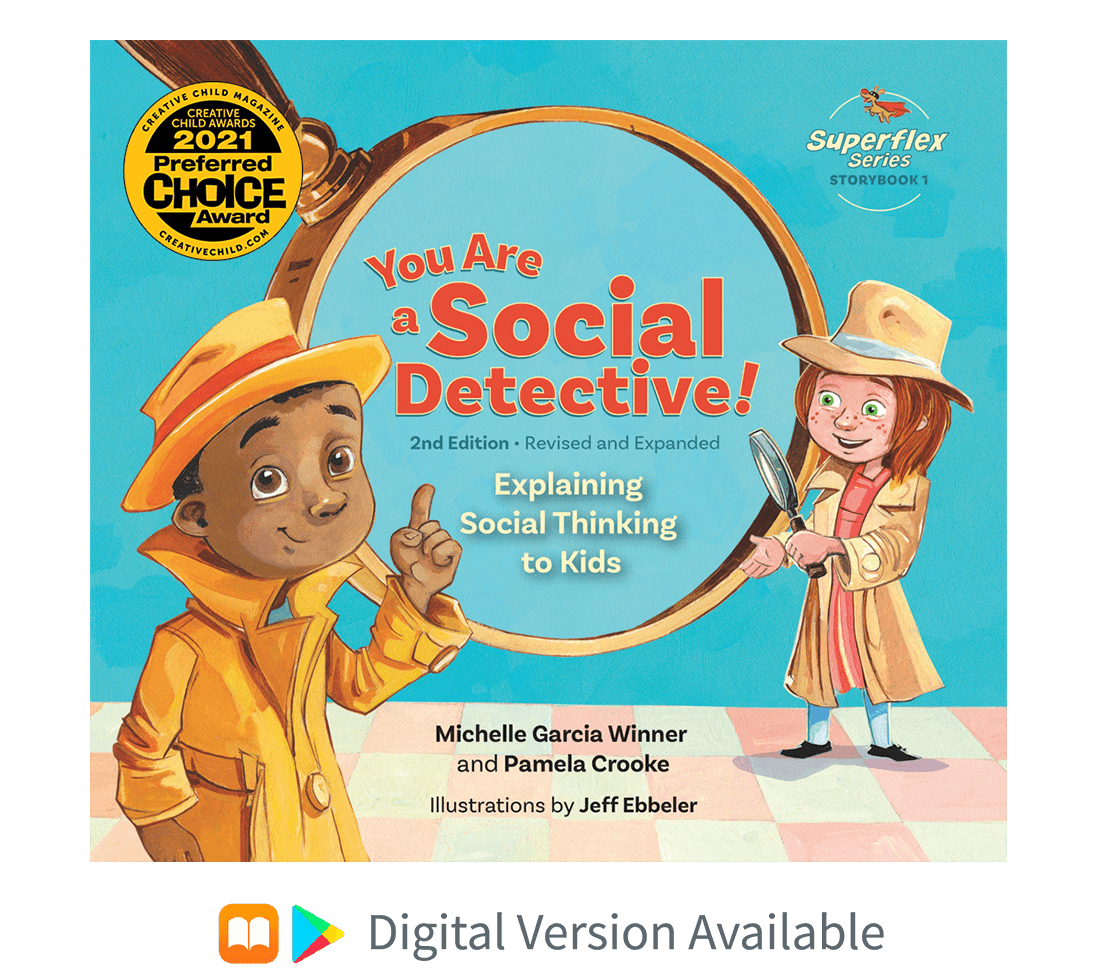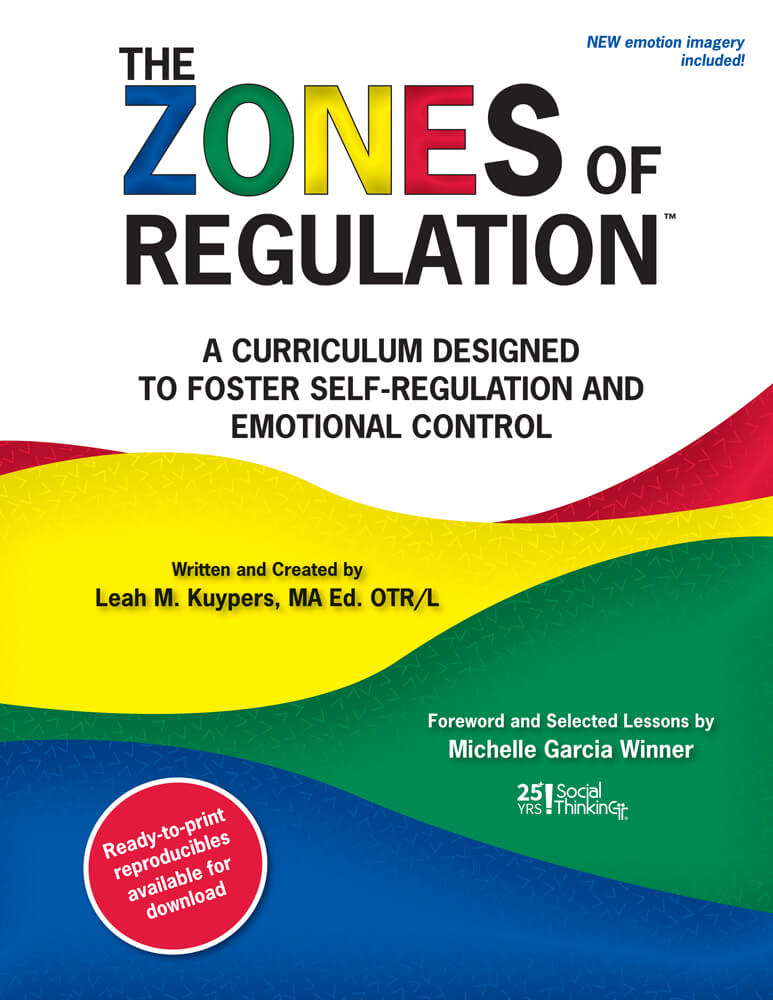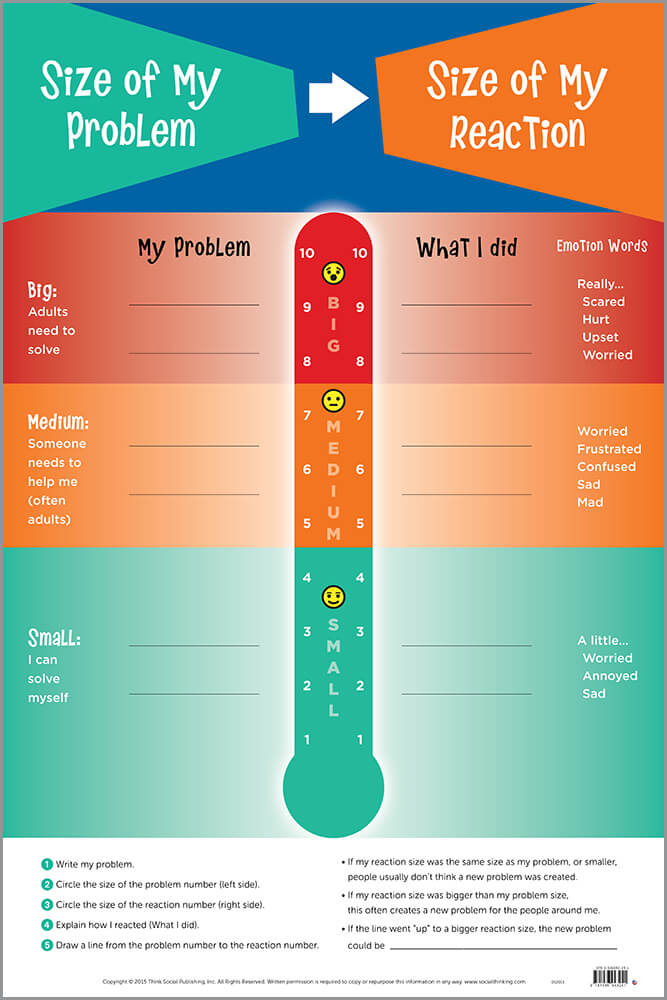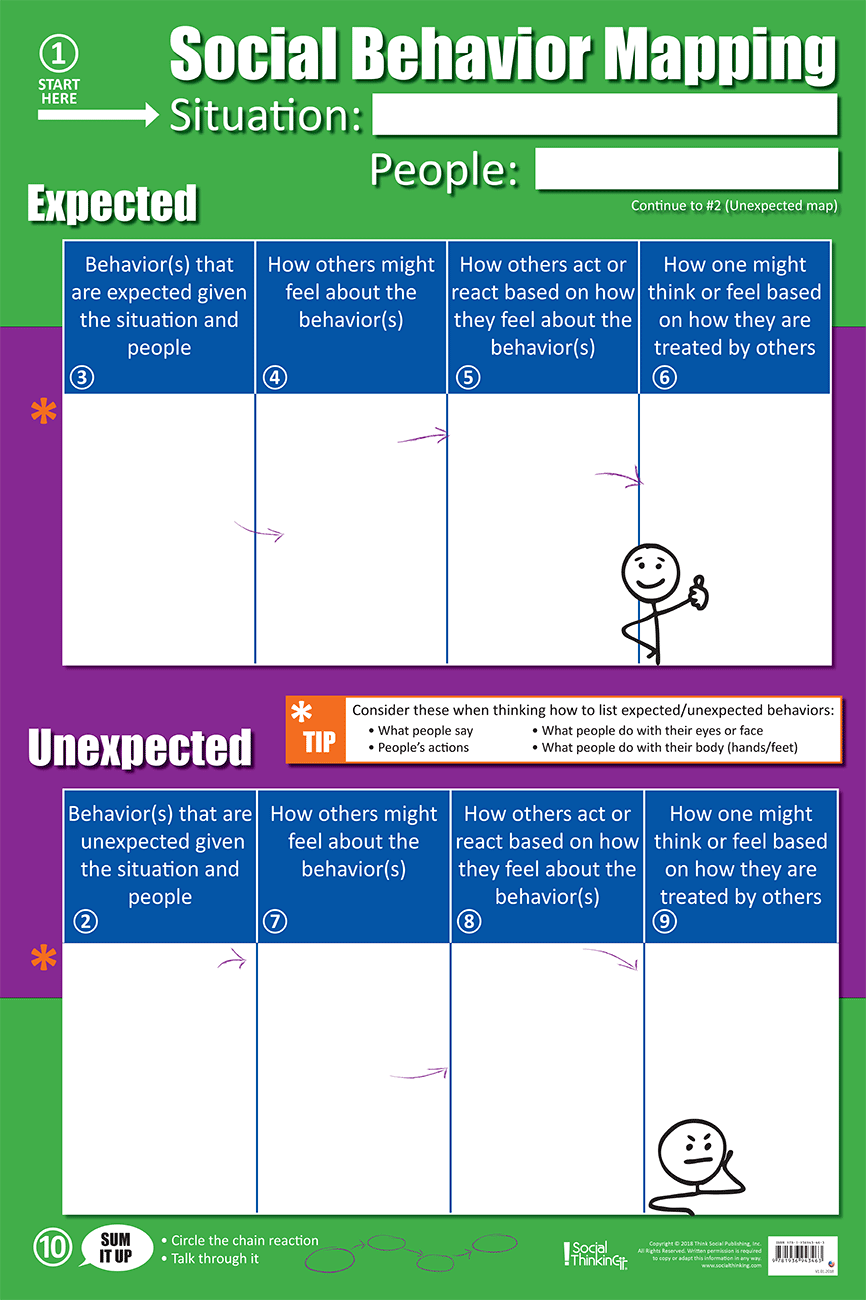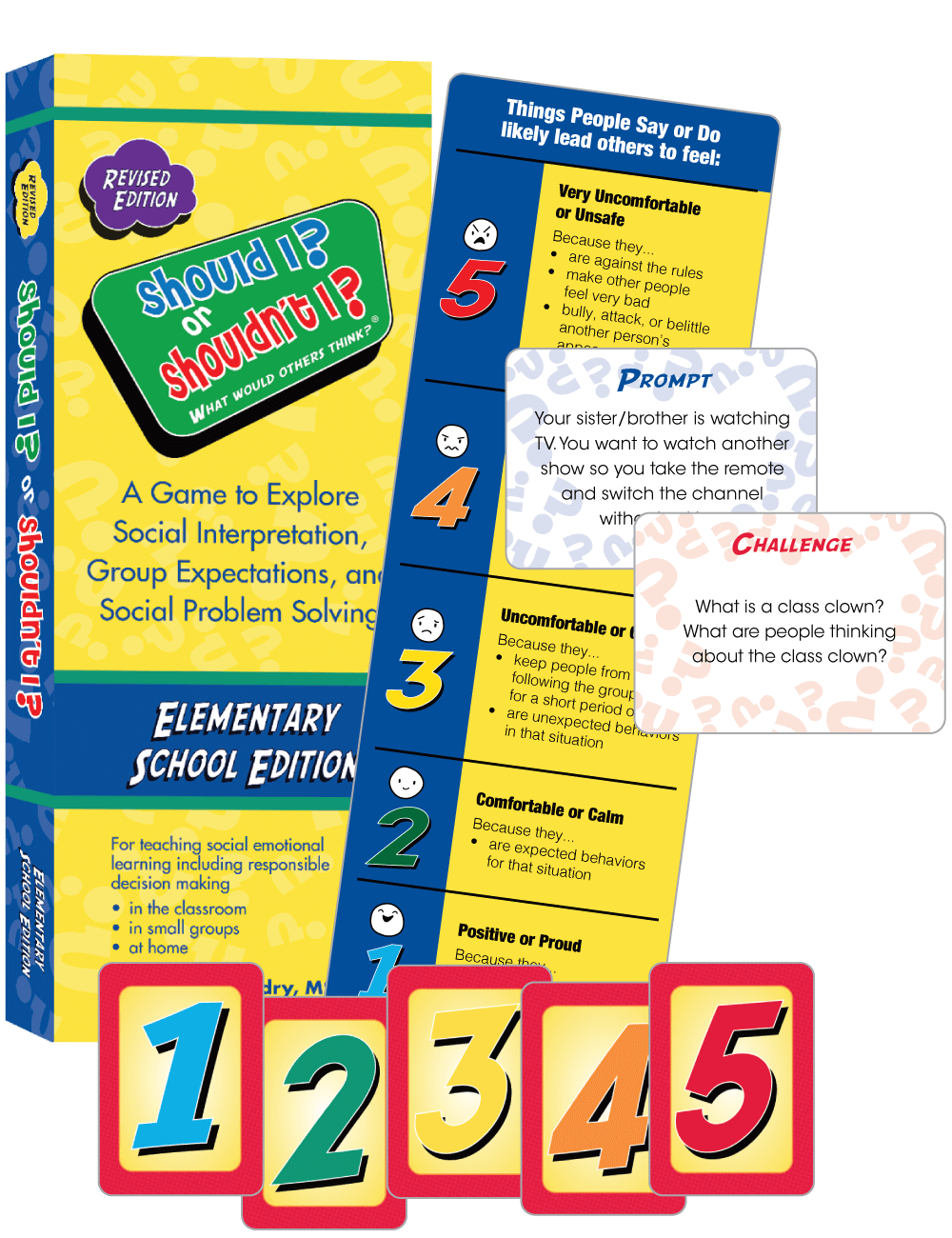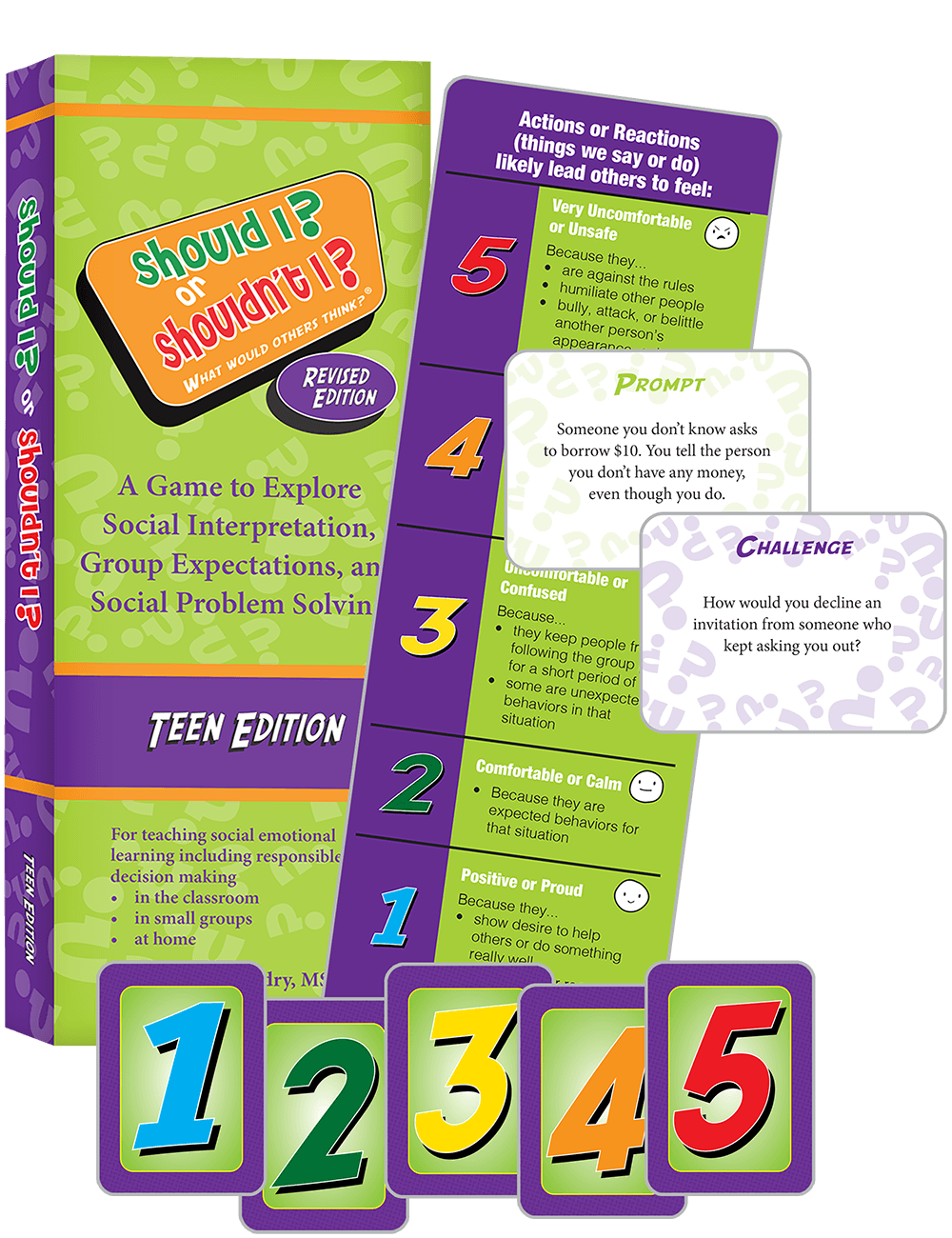The ILAUGH Model
The ILAUGH Model of Social Cognition is a core (and critical) framework created and developed by Michelle Garcia Winner to help professionals and parents understand and think about the struggles faced by those with social learning challenges. The Framework is based on an extensive literature base of both seminal and current research and represents the foundation of all Social Thinking concepts. ILAUGH is an acronym for the research-based concepts that contribute to challenges in those with social learning issues across academic, community, vocational, and social contexts. The sections of the ILAUGH are not only grounded in the literature, but also represent a rich clinical base. Although the ILAUGH Model is divided into six key areas, there is commonly an overlap between and within each of the sections.

ILAUGH Model of Social Thinking
I - Initiation
Initiation of communication is the ability to use one’s language skills (verbal and nonverbal) to start (or initiate) something that is not routine. This can be in the form of difficulty asking for help, seeking clarification, executing a new task, and entering and exiting a peer group. An individual's ability to talk about his or her own topics of interest can be in sharp contrast to how that person communicates when in need of support or clarification. Yet, these two skills—asking for help and understanding how to join a group for functional or personal interaction—are paramount for future success in the workplace, academic endeavors, and relationships.
Whalen, C., Schreibman, L., & Ingersoll, B. (2006). The collateral effects of joint attention training on social initiations, positive affect, imitation and spontaneous speech for young children with autism. Journal of Autism & Developmental Disorders, 36 (5), 655-664.

McMahon, C. M., Vismara, L. A., & Solomon, M. (2013). Measuring changes in social behavior during a social skills intervention for higher-functioning children and adolescents with autism spectrum disorder.Journal of Autism & Developmental Disorders, 43(8), 1843-185.

Rao, P., Beidel, D., & Murray, M. (2008). Social skills interventions for children with Asperger Syndrome or High Functioning Autism: A review and recommendations. Journal of Autism & Developmental Disorders, 38, 353-361.

L - Listening
From a social perspective, listening is more than just receiving auditory information. It routinely requires the integration of visual information with auditory information within the context in order to understand the full meaning of the message being conveyed, or at least make an educated guess about what is being said when the message cannot be interpreted literally. This is also referred to as “active listening” or whole body listening (Truesdale, 1990). Classrooms depend heavily on having all students attend nonverbally to the expectations in the classroom.
Many individuals with ASD, as well as others with social learning challenges, have technical visual processing strengths, but may struggle to comprehend information presented via the dual challenges of social visual information (reading nonverbal cues) and auditory processing.
MacDonald, R., Anderson, J., Dube, W., Geckeler, A., Green, G., Holcomb, W., Mansfield, R., & Sanchez, J. (2006). Behavioral assessment of joint attention: A methodological report. Research in Developmental Disabilities: A Multidisciplinary Journal, 27 (2), 138-150.

Marshall, P., & Fox, N. (2006). Biological approaches to the study of social engagement. Neurobiological Perspectives NY: Oxford University Press, pp. 3-18.

Mundy, P. & Crowson, M. (1997). Joint attention and early social communication: Implications for research on intervention with autism. Journal of Autism and Developmental Disorders, 27(6).

Saulnier, C. & Klin, A. (2007). Brief report: Social and communicative abilities and disabilities in higher functioning individuals with Autism and Asperger Syndrome. Journal of Autism and Developmental Disorders, 37, 788-793.

A - Abstract and Inferential
Most of the language we use is not intended for literal interpretation. Our communication is peppered with idioms, metaphors, sarcasm and inferences. Societies around the world bestow awards to writers, and even comedians, who are the most creative with language. Each generation of teenagers and young adults leave a trail of new slang for consumption - most of which is abstract.
Abstract language has also crept into the digital, mass and social media markets. Our commercials, web banners, print flyers and video clips are full of abstract information that require all of us to interpret and infer the meaning. Do people really mean what they say in advertising? How do we know a good deal from a sham? It's incredibly complicated and yet most of us can easily understand the underlying meaning. And, it is a mistake to assume that individuals with strengths in factual knowledge, but underlying social thinking challenges, understand the non-literal use of language so prevalent in our society. In fact, many don’t!
Active interpretation of the motives and intentions of others emerges in the first year of life and expands in complexity thereafter. Children learn that mom’s tone of voice speaks volumes and that attention to only her words can miss much of her message. As children grow developmentally, they understand that message interpretation depends heavily on one’s ability to “make a smart guess” based on past experiences, what they know (or don’t know) about the current person and situation, and the communication clues available. Language users assume their communicative partners are trying to figure out their messages. By third grade, neurotypical students understand that we are to infer meaning rather than expect it to be coded literally.
Individuals who struggle to interpret the abstract/inferential meaning of language also routinely struggle with academic tasks such as reading comprehension of literature (e.g., interpreting a character’s thoughts, actions and motives based on the context of the story) and written expression.
Norbury, C.F. & Bishop, D. (2002). Inferential processing and story recall in children with communication problems: A comparison of specific language impairment, pragmatic language impairment and high functioning autism. International Journal of Language & Communication Disorders, 27 (3), 227-251.

Rapin, I. & Dunn, M. (2003). Update on the language disorders of individuals on the autism spectrum. Brain and Development, 24, 166-172.

U - Understanding Perspective
The ability to interpret others’ perspectives or beliefs, thoughts and feelings across contexts is critical to social learning. It is central to group participation in the social, academic or vocational world. Individuals with social learning challenges are often highly aware of their own perspective, but may struggle to see another’s point of view.
To understand the differing perspectives of others requires that one’s Theory of Mind (perspective taking) work quickly and efficiently. Most neurotypically developing students acquire a solid foundation in ToM between the ages of 4 to 6 years old. Perspective taking is not one thing, it represents many things happening all at once meaning it is a synergistic and dynamic process. A definition of perspective taking can include the ability to consider your own and others:
- Thoughts
- Emotions
- Physically coded intentions
- Language based intentions
- Prior knowledge and experiences
- Belief systems Personality
- While considering all of this with regards to the specific situation being considered.
The ability to take perspective is key to participation in any type of group (social or academic). It is also a critical component when interpreting information that requires understanding of other’s minds, such as reading comprehension, history, social studies, etc. However, like all other concepts explored in the ILAUGH model, one’s ability to take perspective is not a black or white matter.
Boucher, J. (2012). Putting theory of mind in its place: Psychological explanations of the socio-emotional-communicative impairments in autistic spectrum disorder. Autism: The International Journal of Research and Practice, 16(3), 226-46.

Frith, U. & Frith, C. (2010). The social brain: Allowing humans to bodly go where no other species has been. Philosophical Transactions of The Royal Society, B, 365, 165-175.

Baron-Cohen, S. (2000). Theory of mind and Autism: a fifteen year review Understanding other minds: Perspectives from developmental cognitive neuroscience. New York: Oxford University Press, 16(3), 226-46.

Spek, A., Scholte, E. M., & Van Berckelaer-Omnes, I.A. (2010). Theory of mind in adults with HFA and Asperger Syndrome. Journal of Autism and Developmental Disorders 40 (3), 280-289.

G - Gestalt or Getting the Big Picture
Conceptual processing is a key component to successful social and academic functioning. It is critical to be able to be a part of and follow the group plan or share an imagination. Due to the fact that information is conveyed through concepts and not just facts, it is important that one is able to tie individual pieces of information into the greater concept. For example, when engaged in a conversation, the participants should be able to intuitively determine the underlying concept(s) being discussed, as well as identify the specific details that are shared. Similarly, when reading, one has to follow the overall meaning rather than just collect a series of seemingly unrelated facts. As with many elements of social cognition, this ability relies heavily on strong executive function skills. As a result, difficulty with organizational strategies often stems from problems with conceptual processing. Weaknesses in the development of this skill can greatly impact one’s ability to formulate written expression, summarize reading passages, and manage one’s homework load, as well as derive the intended meaning from a social conversation.
Hume, K., Loftin, R., & Lantz, J. (2009). Increasing independence in Autism Spectrum Disorders: A review of three focused interventions. Journal of Autism and Developmental Disorders, 39, 1329-1338.

Happe’, F. & Frith, U. (2006). The weak coherence account: Detail focused cognitive style in Autism Spectrum Disorders. Journal of Autism and Developmental Disorders, 36 (1), 5-25.

Van Lang, N., Bouma, A., Sytema, S., Kraijer, D., & Minderaa, R. (2006). A comparison of central coherence skills between adolescents and an intellectual disability with and without comorbid autism spectrum disorder. Research in Developmental Disabilities: A Multidisciplinary Journal, 27 (2), 217-266..

H - Human Relationships & Humor
Human relatedness is at the heart of social interaction. Most of us desire some form of social interaction and our students, clients and family members are no exception. The struggle is having the ability to relate to other's minds, emotions and needs. Establishing the concept of human relatedness is essential before advancing in any lessons. Most of the clients with whom we work with have a very good sense of humor, but they often feel anxious because they miss many of the subtle cues that help them to understand how to use their humor successfully with others. It is important for educators/parents to work compassionately with humor to help minimize the anxiety the individual may experience. It is also not uncommon for many to struggle with using humor inappropriately and direct lessons targeting this concept are necessary.
Greenspan, S. & Wieder, S. (2003). Engaging Autism: The Floortime Approach to helping children relate, communicate and think. Jackson, TN: Perseus Books.

Loukusa, S., Leinonen, E., Kuusikko, S., Jussila, K., Mattila, M.L., Ryder, N., Ebeling, H., & Moilanen, I. (2007). Use of context in pragmatic language comprehension by children with Asperger Syndrome or High-Functioning Autism. Journal of Autism and Developmental Disorders, 37 (6), 1049-1059.

Prizant, B., Wetherby, A., Rubin, E., Laurent, A. & Rydell, P. (2006). The SCERTS™ Model. A comprehensive educational approach for children with autism spectrum disorders. Maryland: Brookes Publishing. Program Planning and Intervention. Volume II Program Planning and Intervention.









